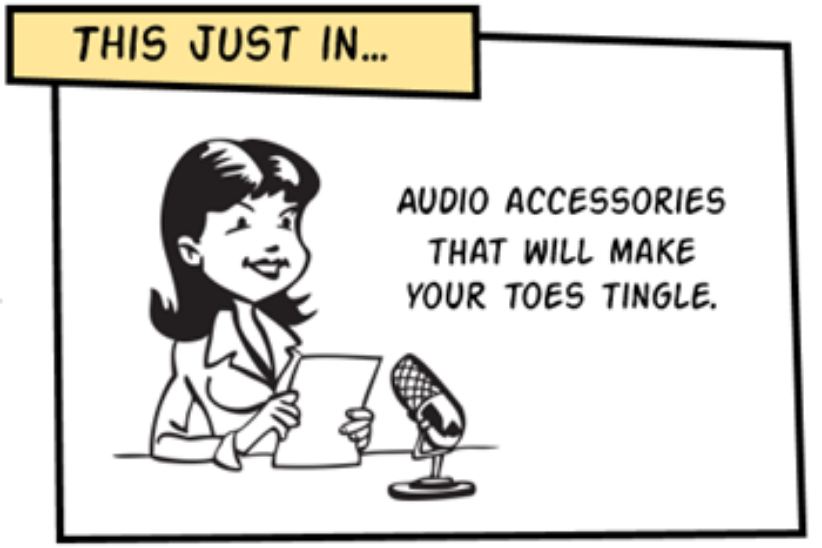This guide gives simple and practical advice on how to write a good research paper. Based on the “Scientific Work” lecture, it is written for PhD students in computer science, but it can also be widely used and appreciated by students in diverse fields.
Why to publish?
When you are about to begin a PhD study, you are probably asking yourself, why you have to publish a paper within the PhD process. In almost all PhD programs it is expected to publish a certain number of papers, whereby the numbers may vary depending on the field of study, the expectations of the supervisor, and the specific requirements of the PhD program.
Therefore – ideally before your start your PhD study – it is important to familiarize yourself with the curriculum and specific requirements of the PhD program or doctoral school you want to enroll/you are enrolled to find out the minimum number of papers you have to write.
In computer science at TU Graz, a PhD student is expected to publish at least two papers by the end of their program. The papers should be published in reputable journals, with high impact factor, and they should contribute to the field of study. It is also important to discuss the expectations for publications with your supervisor.
However, the goal of publishing papers is not just to meet a certain number of publications, but also
- to advance the field of knowledge and to contribute to the field and scientific community.
- to demonstrate progress and productivity to your supervisor, department, and/or funding agency.
- to establish credibility by publishing papers in reputable journals, which can help you to establish yourself as an expert. Establishing expertise can be also beneficial for future career opportunities.
- to develop your skills in scientific writing, data analysis, and critical thinking, which are all important skills for a successful career as researcher.
- to build connections with other researchers in the field, which can be beneficial for collaborations and networking opportunities.
- to prepare for your thesis defense by giving you practice in presenting your research and answering questions about it.
- to increase your chances of getting post-doctoral positions or academic jobs.
When you finally completed your PhD and are on your way to a successful researcher, publishing papers does not stop. There are also several reasons why you have to continue to publish papers:
- to share new ideas and research findings with the scientific community
- to disseminate your work and make it available for others to read and build upon
- to establish expertise and credibility
- to climb the academic career ladder, and prepare yourself for promotions and tenure
- to receive feedback from other experts in the field, which can help to improve the research and further advance the field
- to have a lasting impact and contribute to the field of knowledge and the scientific community
Publication process
The process of writing a paper can be a challenging and time-consuming task. It may feel overwhelming, but once you have a couple of sentences done, it will seem less daunting. Towards the end, you will may find yourself feeling a sense of satisfaction and pleasure in the work you have accomplished and the improvements you have made in (technical) writing.
So let us look at the process of publishing a paper:
Idea
An idea is necessary when writing a paper because it provides direction and focus for the research. The idea should be well thought-out and clearly articulated, and the results should be interpreted based on the idea. Without a clear idea, the paper may lack coherence, direction, and significance. Additionally, it also helps the paper to be more interesting and engaging for the readers.
Testing
The testing process is crucial for the validity and reliability of the research. The testing process should be clearly stated in the methods section of the paper and should be appropriate for the research question. Testing also allows you to identify errors or inconsistencies in the data, and to correct them before the paper is submitted for publication.
Paper writing
The paper writing process refers to the series of steps that are followed when creating a paper. The process can vary depending on the field of study and the specific requirements of the journal or conference, but it typically includes the following steps:
- Choosing a research topic: The first step in the process is to choose a research topic that is of interest to you and that is relevant to your field of study.
- Conducting literature review: Every paper consists of a review of the existing literature to understand the current state of research in the field and to identify gaps in the literature.
- Developing a research question or hypothesis: Based on the literature review, a research question or hypothesis is developed.
- Designing the study: You have to design the study and outline the methods that will be used to collect and analyze data.
- Collecting and analyzing data: You have to collect and analyze data by using appropriate statistical or analytical methods.
Submission
The first step in the submission process is to choose a journal or conference that is most appropriate for the research. This involves identifying journals or conferences that are relevant to the field of research and that have a high impact factor or reputation. Once a journal or conference has been chosen, the paper should be prepared according to the journal or conference’s guidelines. The paper is then submitted to the journal or conference through an online submission system or by email. After initial submission, the paper goes through the peer-review process, where it is evaluated by experts in the field. The reviewers provide feedback on the paper, and the journal editor or conference committee will decide whether to accept, reject, or request revisions to the paper. It is important to be prepared for the submission to take some time before getting a decision and it is recommended to have a backup plan in case the paper is rejected.
If revisions are required, you have to make the necessary changes and resubmit the paper. The revised paper will be evaluated again by the reviewers or conference committee. If the paper is accepted for publication, you have to prepare the final version of the paper and submit it to the journal or conference. The paper will then be published in the journal or presented at the conference.
Reviewing
Within the reviewing process the paper is evaluated by experts. It can vary depending on the journal or conference, and it can take several weeks or even months. The process is designed to ensure that the paper is of high quality and that it makes a significant contribution to the field of research. The process usually involves the following steps:
- Initial screening: The paper is initially screened by the editor or a member of the editorial board to ensure that it is relevant to the journal or conference, and that it meets the basic quality and formatting requirements.
- Peer-review: If the paper passes the initial screening, it is sent to one or more peer-reviewers for evaluation. Peer-reviewers are experts in the field who are selected by the editor or editorial board. Reviewers are asked to evaluate the paper based on its originality, significance, methodology, and presentation. They will also check if the paper follows the ethical standards and if the results are correctly presented and supported by the data.
- Feedback and decision: After the reviewers have completed their evaluations, they provide their feedback to the editor or editorial board. Based on the feedback, the editor or editorial board will decide whether to accept the paper, reject the paper, or request revisions to the paper.
- Revisions and resubmission: If revisions are requested, you have to make the necessary changes to the paper and resubmit it for further review. The revised paper will be re-evaluated by the reviewers and the editor or editorial board will make a final decision.
- Final acceptance: If the paper is accepted, you have to prepare the final version of the paper, incorporating any changes that were requested during the review process. The paper will then be published in the journal or presented at the conference.
Rebuttal
Within the rebuttal process you respond to feedback received during the peer-review process. It is important to focus on the points from the reviewers that could make your paper rejected.
The process usually involves the following steps:
- Reviewer feedback: You will receive feedback from the reviewers, which may include comments, suggestions, and recommendations for revisions to the paper.
- Preparing a response: You will prepare a response to the feedback, addressing each of the comments and suggestions provided by the reviewers. This response should address any errors or inconsistencies in the data, explain any decisions or methods used in the research, and provide any additional information or explanations that may be needed.
- Resubmitting the paper: You will resubmit the paper along with the response to the reviewers‘ comments to the journal or conference.
- Re-evaluation: The paper will be re-evaluated by the reviewers, taking into account the feedback response. The editorial board will make a final decision on the paper based on the re-evaluation.
It is important to note that not all journals or conferences have this process and some of them may have different processes.
Acceptance
Within the acceptance process the research paper is approved for publication in a journal or presentation at a conference. The process typically involves the following steps:
- Peer review: The paper is evaluated by experts in the field, who grade the paper’s originality, significance, methodology, and presentation. They will also check if the paper follows the ethical standards and if the results are correctly presented and supported by the data.
- Feedback and decision: After the reviewers have completed their evaluations, they provide their feedback to the editorial board. Based on the feedback, the editorial board will decide whether to accept the paper, reject the paper, or request revisions to the paper.
- Revisions and resubmission: If revisions are requested, you will make the necessary changes to the paper and resubmit it for further review. The revised paper will be re-evaluated by the reviewers and the editorial board will make a final decision.
- Final acceptance: If the paper is accepted, you will prepare the final version of the paper. Finally, the paper will then be published in the journal or presented at the conference.
It is important to note that the acceptance process can vary depending on the journal or conference. It can also take several weeks or even months to complete.
Final revision
Within the final revision process the submission can be corrected (errors, mistakes, …) before it is accepted for publication. The process typically involves the following steps:
- Review of the paper to ensure that it is complete, accurate, and conform to the guidelines of the journal or conference.
- Formatting and proofreading according to the journal or conference guidelines, to ensure that it conforms to the required style and format.
- Final submission to the journal or conference.
- Final acceptance to ensure that it meets the journal or conference’s standards and that all revisions have been made. If it is accepted, the paper will be published or presented.
It is important to note that this final revision process may not be required for every journal or conference, and some may have different processes.
Structure of a paper
Title
The title is an important element of a paper. It should be clear, concise, interesting, and accurately reflect the content of the paper. The title can help to attract readers and make the paper more discoverable. Here are some tips to consider when crafting a title for your paper:
- Be specific: The title should clearly describe the main topic of the paper. Avoid using general or vague terms that do not accurately reflect the content of the paper.
- Keep it short: The title should be as short as possible, while still accurately describing the content of the paper. Long and wordy titles can be confusing.
- Use keywords: The title should include keywords that are relevant to the paper’s content and that will help readers find the paper when searching databases or online.
- Avoid jargon: The title should be written in plain language that is accessible to a broad audience. Avoid using jargon or technical terms that may be unfamiliar to readers outside of the field.
Abstract
The purpose of an abstract is to crystalize ideas, and to give a quick way to understand the main points, general directions and conclusions of the paper. It is typically found at the beginning of a paper and usually between 150-300 words, depending on the journal or conference guidelines. As it describes work that has already been done, it should be written in past tense. It also should be able to understand the abstract on its own, without the need to refer to the paper. Additionally, it is often the only part of a paper that is widely read, and it can be the determining factor for whether or not to read the entire paper.
The abstract of a paper typically includes the following elements:
- Purpose: A statement of the research question or objective of the paper.
- Methods: A brief description of the research methods, including the study design, data collection, and analysis techniques.
- Results: A summary of the main findings or results of the paper, including any statistical analyses and conclusions.
- Conclusions: A summary of the main conclusions and the implications.
- Keywords: A list of keywords that are relevant to the paper. It should help readers find the paper when searching databases or online.
Introduction
The introduction of a paper is the first section of the paper. It should provide background information to understand the research problem and the significance of the study. The introduction should be written in a clear and concise manner, and should be easily understandable by a broad audience. It should include the following elements:
- Background: A brief overview of the current state of knowledge in the field, including relevant research studies and theories that provide the context for the current study.
- Problem statement: A clear and concise statement of the research problem or question that the paper is trying to address.
- Research questions or hypotheses: A clear statement of the research questions or hypotheses that the paper is trying to answer.
- Purpose: A statement of the main objective or purpose of the paper, explaining why the research is important and what the paper aims to accomplish.
- Scope: A description of the scope of the research, including the population, sample, and variables that will be studied.
- Significance: A statement of the potential significance of the research, including the potential contributions to the field, and the implications of the findings.
- Outline: An outline of the structure of the paper, including the main sections and their contents.
Related work / Literature review
The “related work” or “literature review” provides an comprehensive and in-depth review of the literature and an selective, focusing overview of the existing research on the topic that the paper is addressing. It should be written in past tense and should be organized chronologically or thematically. It includes the following elements:
- Overview of the field: A brief overview of the field of research, including the current state of knowledge and recent developments.
- Summary of previous research and relevant studies: A summary of the research that is directly relevant to the research problem or question being addressed in the paper. This section should provide a comprehensive review of the literature, including both theoretical and empirical studies.
- Identification of gaps in the literature: An analysis of the key findings from relevant studies, highlighting the key similarities and differences among them. This section should also identify gaps in existing literature and the ways in which the current study aims to address them.
- Comparison to current studies: A comparison between the current study and previous research studies, highlighting the similarities and differences, methods, and results.
- Contribution and Relevance: A statement of how the current study contributes to the field, including how it fills gaps in the literature or extends previous research.
Method
The method section in a paper describes the process used in conducting the research. It includes the details of the study design, the sample population, the data collection methods, the data analysis techniques, and the statistical methods used to interpret the results. The purpose of the method section is to provide enough information to allow other researchers to reproduce the study and validate the results.
The following elements are typically included in a method section:
- Participants: This section describes the sample of participants who were included in the study, including any relevant demographic information.
- Materials: This section should describe any materials or equipment that were used in the study, including any software, instruments, or protocols.
- Procedure: This section should provide a step-by-step description of the procedures that were followed to conduct the study, including any experimental manipulations, measurements, or data collection methods.
- Design: This section should describe the experimental design of the study, including the type of design, the independent and dependent variables, and any control or confounding variables.
- Data analysis: This section should describe the statistical methods that were used to analyze the data, including any software that was used, and any data transformations or reductions that were performed.
- Ethical considerations: This section should describe any ethical considerations that were taken into account in the study, including any risks to participants, informed consent process, and data protection measures.
It is important to note that the method section should be written in enough detail so that someone else could replicate the study based on the information provided. However, it should be concise and avoid providing unnecessary information.
Results
The results section presents the main findings from the study. It should interpret the results based on the research questions or hypotheses, and provide a discussion of patterns, trends, or relationships that emerged from the data. It includes statistical tests or analyses that were performed.
The results should be presented in a logical and coherent manner. It is recommended to use tables, figures, graphs or diagrams to present and visualize the results. It is also important to know that the results should be written in a neutral and objective tone.
Discussion / Conclusion / Future work
The “discussion”, “conclusion” and “future work” section should provide an interpretation of the results, draw conclusions based on the findings, and suggest directions for future research. It should discuss the implications of the findings for theory and practice, including any recommendations for future research. It should also acknowledge any limitations of the study, including any confounding variables, measurement error, or other sources of bias that may have influenced the results. Finally, it should suggest directions for future research, e.g. questions that may arise.




